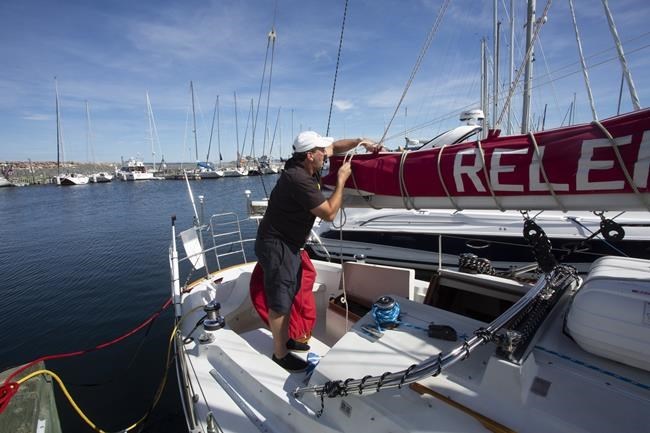ST. JOHN'S, N.L. — Hurricane Larry made landfall as a Category 1 storm in eastern Newfoundland, arriving near South East Bight around midnight local time, according to the National Hurricane Centre in Miami.
The storm crashed inland on the western shores of Placentia Bay on the Burin Peninsula with maximum sustained winds of 130 kilometres per hour, bringing heavy rain and pounding seas.
Newfoundland Power is reporting that thousands of customers have been blacked out in several areas including St. John's, Mount Pearl, North East Avalon and the Southern Shore.
Widespread outages are also reported in Whitbourne, Conception Bay North, Cape Shore and the Burin Peninsula.
Environment Canada says Larry is currently tracking across Trinity Bay and will eventually move northeast of the island later this morning.
The agency says wind gusts topping 180 kilometres an hour have been observed across southern exposed and elevated areas of the southern Avalon. A peak gust of 145 kph was recorded at St. John's International Airport.
A notable storm surge is also reported over portions of the Burin peninsula and southern Avalon, with the tide at Argentia showing a peak water level of about 150 centimetres higher than normal. About 30 millimetres of rain fell in a very short period of time at the centre of the storm. Hurricane warnings remain in effect for the Avalon Peninsula for now but the national weather agency is predicting they will likely be ended in a few hours as the centre of Larry continues to pull away.
Tropical Storm warnings remain in effect from the Bonavista Peninsula through to Bonavista North, while similar warnings for the Connaigre region as well as the Burin Peninsula have been ended. South-facing coastlines in southeastern Newfoundland from Connaigre to the Avalon Peninsula have been impacted, with reports and pictures of flooding on social media. Large ocean swells along the Atlantic coast of Nova Scotia and southern Newfoundland will continue to present a hazard to those close to the shore today. Storm surge warnings remain in effect for portions of southeastern Newfoundland.
The provincial government issued a statement Friday saying residents should prepare a basic emergency kit to sustain them for at least 72 hours. The kit should have food, water, batteries, a portable radio and prescription medications. In the event of a blackout, the province asked people to use flashlights instead of candles and to refrain from using a gas range, stove or oven to heat a home.
As Larry churned towards eastern Newfoundland, residents were strapping their barbecues to their porches and emptying grocery store shelves in preparation for power outages, toppled trees and property damage.
Stores in the St. John's region closed early as a thick fog descended on the city ahead of the storm. The entire Avalon Peninsula — the most populous region of the province — hunkered down as meteorologists and government officials urged people to stock up, secure their belongings and stay indoors.
On social media, people shared reminders to charge phones and offered extra supplies to anyone in need.
This report by The Canadian Press was first published Sept. 10, 2021.
The Canadian Press




